June 2023
Singita Kruger National Park: June 2023
Share:
Singita Kruger National Park: June 2023
June marks the first month of winter and the transition from autumn to winter has been a magnificent transformation. The once lush and vibrant landscape has begun to undergo a gradual shift. The golden hues of the dry, fallen leaves sprinkle the ground, creating a breath-taking mosaic and a beautiful rustle as the animals walk through it. The towering trees, across the span of the concession are holding on to their leaves with a resilience not yet seen in other years and it is a testament to the great rains we have received in the beginning of the year, even the herbivores still boast luxurious coats as they reach towards the trees and grasses that provide adequate nutrients not just to survive but to thrive. The evergreens and those lucky enough to be based along the river, whose roots have infinite access to water, are still wearing their full green coats and some pans and drainages still cradle water.
The morning drives demand that participants wear layers to guard them from the crisp morning air. As winter settles in, a sense of stillness and quietude descends upon the concession, creating a serene and tranquil atmosphere. Yet, amidst this tranquillity, the promise of new growth and life lies dormant under the browning ground.
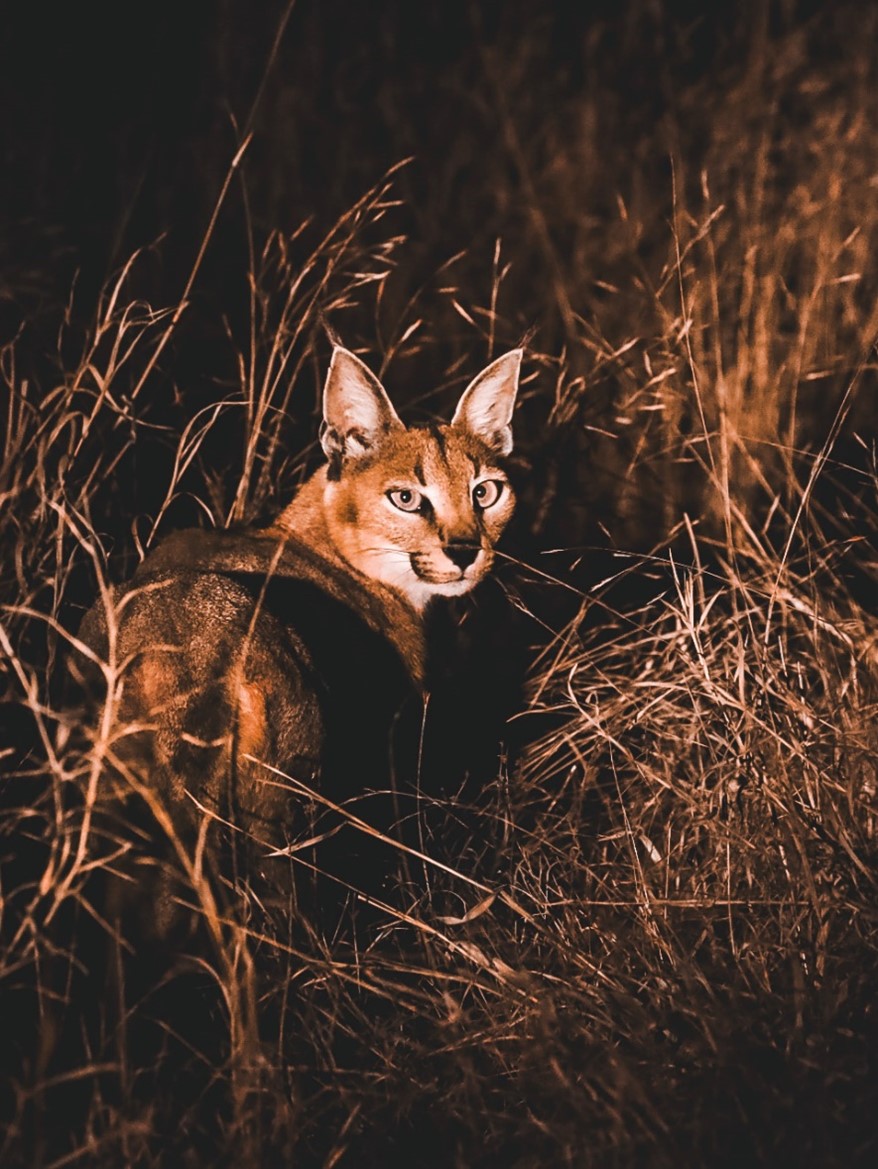
A Sightings Snapshot for June:
Lions
There has been much excitement surrounding the Shishangaan Pride as we celebrate the arrival of three new cubs. They were first found in the granophyre ridge line opposite Lebombo Lodge. Several days after they were found, the pride had managed to take down a bull giraffe along the eastern bank of the N’wanetsi River just to the south of Ndlovu Lookout. All eight cubs were seen feeding on the carcass over the course of several days. This pride is ever growing with what we think to be is another female that is entering the last stages of her gestation period so there might be even more cubs to follow soon.
There have been several sightings of a portion of the Mananga Pride over the course of June. Most notably, eight members of the pride were found feeding on a buffalo near Double Crossing. Their hunting exploits were soon ended due to the arrival of six male lions. They chased the pride off and continued to feed on the carcass. This left the eight members heading south where the following morning they were found feeding on a zebra carcass in the vicinity of Pony Pan. This was the furthest south they have been seen in quite some time as they are sticking to the most north western parts of the concession and often venturing out into the Kruger National Park in search of the larger buffalo herds for sustenance.
The fathers of the ever-growing Shish Pride have been seen on several occasions with the pride. Aptly with the month of June being associated with international Father’s Day, the two males have been making quite the impact and solidifying themselves in the southern regions of the concession. However, with several coalitions in the vicinity, all with higher numbers in their ranks it is going to be a tall order for the Trichardt males to keep them at bay and sire their impending offspring.
The new six males have been seen intermittingly over the last eight months in the very far northern reaches of the concession. The make-up of the coalition is one older male and five younger males. Of the five younger males, two are substantially larger than the other three. Propositions have been made as to how the make-up of this coalition formed, however nothing can be said for certain. They are definitely a coalition to watch out for as potential successors of the north. They have been seen on a few occasions mating with a member of the Mananga Pride which could be them reinforcing their bond, however we are yet to see the fragmented portions of the Mananga Pride together with these males which could mean that their position has not yet been cemented.
In a twist of events, close to the end of the month the Maputo male was seen, need we say more? A recap on who the Maputo male is: He along with the Kumana male are the coalition that formed after he tried to take over the Kumana males’ territory. After months of fighting they decided to team up as they were equally matched and they realised two were better than one. They then ruled over the Shish Pride in the southern part of the concession until the Trichardt males succeeded them. Back to today, he was seen with an unknown male lion in the far north-western parts of our property. The two males did not show any aggression towards each other so it is possible he took a page out of his old book and formed a new coalition late in life. On the very last day of the month he was seen yet again with this unknown collared male but now they dared to head further southeast of where they were first seen which is but a stone kick away from his old territory. We wonder what will become of this new coalition as they were heard roaring which tells us they don’t intend on passing by. Only time will reveal…
The remains of one male lion were seen around Sticky Thorn but by the time we were made aware of the incident by the descending vultures the hyenas on the ground had worked a number on the carcass and there was not much left but a few handfuls of a mane and teeth. What we were able to ascertain was that it was a younger male lion due to the condition of the canines. We thought perhaps one of the six were taken out but a few days later we saw all of them, in all their glory. So, we assume that it is possibly a young male from the Mananga Pride as we are yet to see that specific male in a while. But the next question is, “Who done it?”.
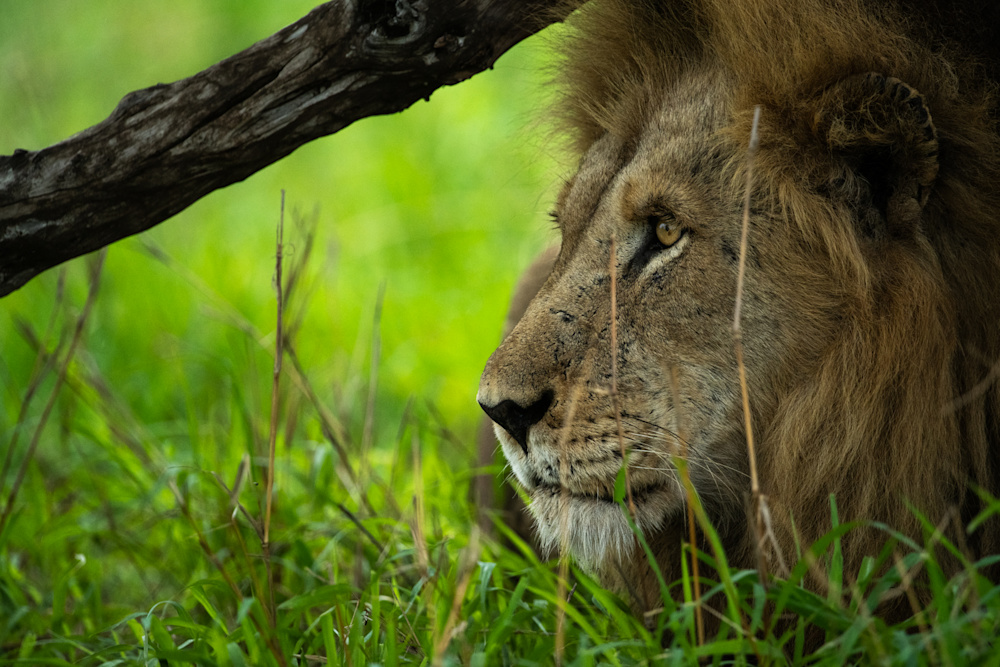
Leopards
We have had several sightings of new leopards along our western boundary with the Kruger National Park. This is common during the winter months as water is scarce which finds predators and prey seeking out surface water points. One typically following another. It is also seen that during these times, same species predators almost become more accommodating during this time. This is evident with there being four females and one young male that are “new” to the area. This area is in the vicinity of Gudzani Dam and the dry riverbeds that are tributaries to the dam and the N’wanetsi River. Even the more established leopards have been seen overlapping their home ranges.
Notable sightings during the month of June have been the 3:3 Dumbana young male who accomplished catching and killing two large male baboons on the ridge line just to the south of Green Apple Hill. This is a feat that is often read about or stories told as large male baboons have been recorded killing female and male leopards if they are caught unaware. The fact that this young male leopard killed two males is quite unheard of in these realms and he is increasing his prey species list which is ever growing.
We have recorded four different male leopards in the vicinity of Dumbana Pools. This reiterates the notion that during drier months leopard consolidate around water points as they need to drink and seem to be more tolerant of each other.
The Dumbana female was seen on a few occasions this month but sadly it is believed that she has lost her cubs.
The Mhlanguleni leap (Mhlanguleni female and her two subadult female cubs) have been sighted on numerous occasions around the central parts of the concession, both as a collective and individually. The cubs still rely on their mom to provide sustenance for them however we are seeing that the Mhlanguleni female is spending more time away from her two cubs. We are also starting to see the youngsters begin stalking and chasing smaller prey, a sign that independence is nearing.
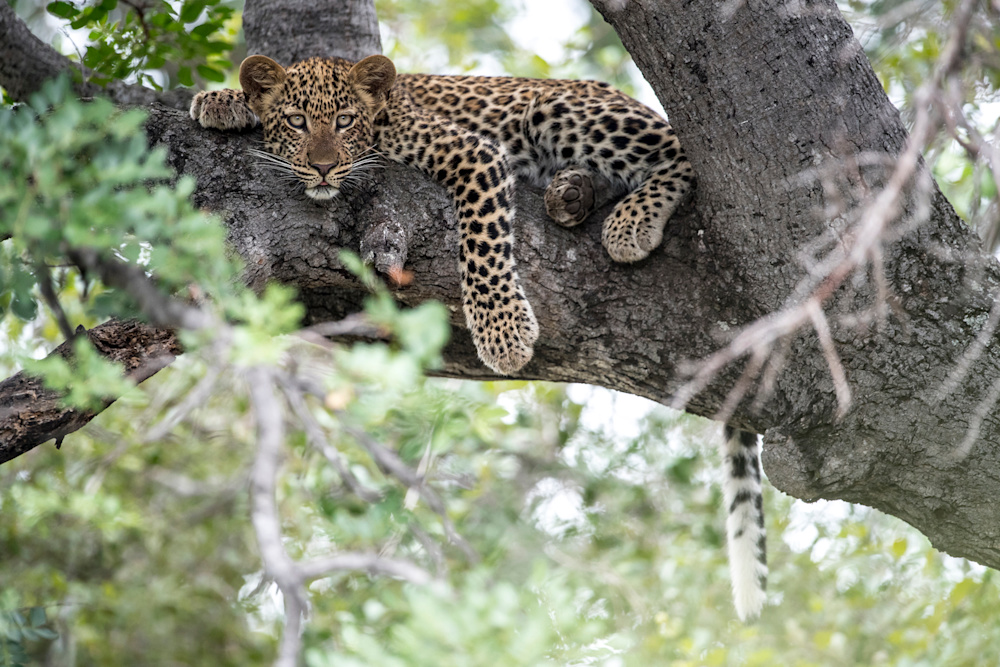
Wild dogs
The Ntsibitsane riverbed became the stage for a scene that most guides, trackers and guests could only dream about. A dramatic scene unfolded in the rocky river bed. A pack of three agile wild dogs, driven by hunger, cunningly outmanoeuvred a weary kudu cow. Their relentless pursuit paid off as they brought down their prey, savouring their hard-earned meal. However, their triumph was short-lived as a cacophony of hyena calls echoed through the landscape. Sensing an opportunity, the hyenas descended upon the scene, their numbers overwhelming the outnumbered wild dogs. In a frenzy of growls and snarls, the hyenas succeeded in stealing the fresh kill from the jaws of the triumphant pack. As the hyenas revelled in their ill-gotten feast, a male leopard silently slinked through the shadows, drawn by the scent of the commotion. With caution and stealth, he seized his chance to scavenge what remained of the kudu carcass, ensuring he did not become entangled in the ongoing struggle. As darkness blanketed the land, the riverbed became an eerie stage for an unexpected twist. Several crocodiles, lurking beneath the water's surface, detected the tantalizing scent of the kill. With jaws agape, they emerged, snapping at the carcass, and plunging into a fierce battle with the hyena and leopard. The night became a tumultuous spectacle as the hyena, leopard, and crocodiles engaged in a desperate tug of war for the dwindling remains. Each predator fought with primal ferocity, their hunger fuelling their determination. In the end, nature's hunger games reached an impasse, and the carcass was devoured, leaving behind only scattered bones and a battleground soaked with the essence of survival. This pack of three has frequented the concession throughout the month and were even seen mating on a few occasions.
The Floppy Ear Pack (9 wild dogs) were only seen a handful of times this could be because they are seasonal breeders and the months of May to August are typically when they den, and years past they have denned in Mozambique. The sightings we have had of this pack have been in the west near the border before they cross back over.
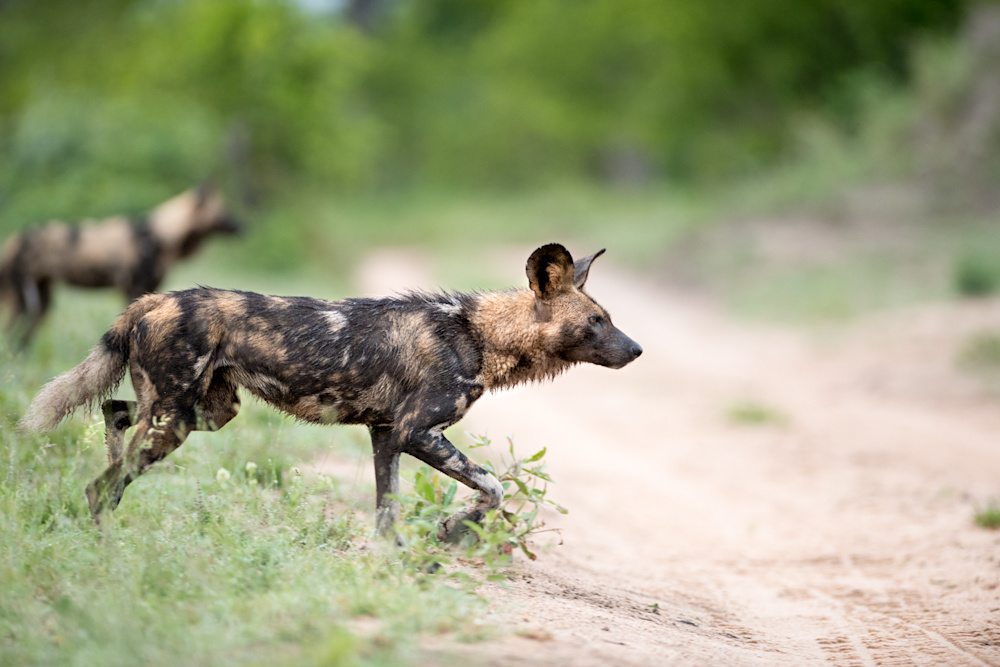
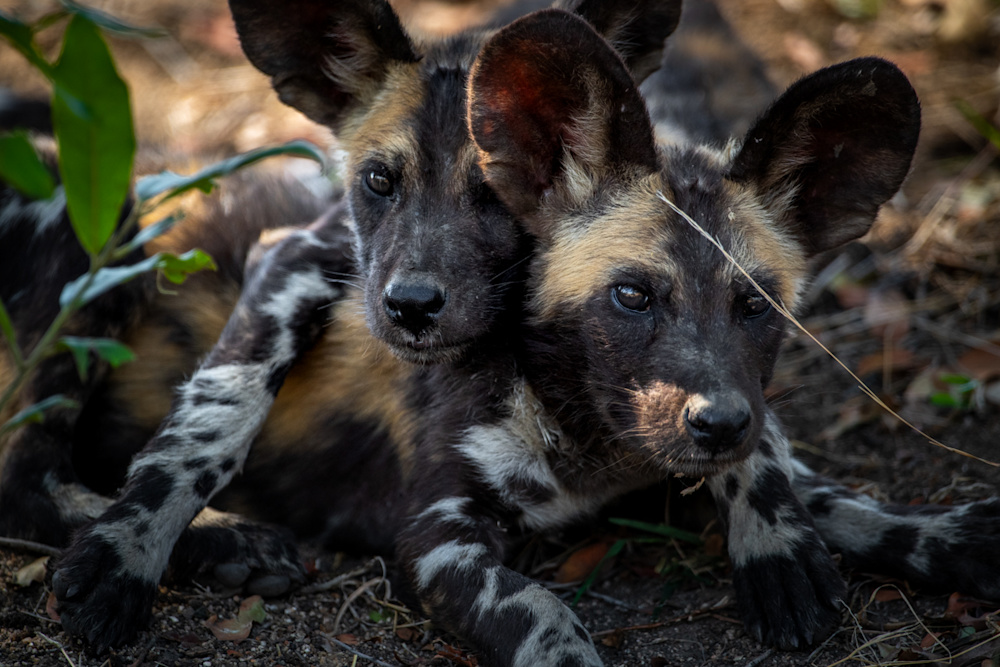
Spotted hyenas
Spotted hyenas, the enigmatic scavengers of the African savannah, have developed remarkable strategies to secure their place in the intricate tapestry of the ecosystem. These highly intelligent and adaptable creatures exhibit behaviours’ that range from relentless pursuit to cunning opportunism. One notable behaviour of spotted hyenas is their adeptness at trailing African wild dogs and lion prides. With their exceptional stamina and endurance, hyenas shadow these formidable predators, capitalizing on the tireless efforts of their hunts. When the wild dogs or lions finally make a kill, the hyenas emerge from the shadows, ready to claim their share of the spoils.
We have seen many hyenas lurking around the kills that the leopards have made and hoisted in trees on the concession waiting patiently for any opportunity for bits to fall or even better for the leopard to droop the whole bounty.
We have also seen a clan with new pups in and around the Ntsibitsane/Dumbana area trailing the adults.
Elephants
The beginning of June proved difficult for elephant viewing as we searched up in the Lebombo mountains and the valleys down below for even one elephant which would appear sporadically. But with the pans drying up and drainage lines that once held rivers also drying up by the end of the month, we have seen hundreds of elephants across the concession with the herds seemingly congregating around the Nwanetsi River.
At one such sighting the parched earth beckoned the majestic elephants, drawing them closer with the promise of cool refreshment of the Nwanetsi. The gentle giants, led by their matriarch, approached with deliberate grace, their massive bodies casting shadows across the golden landscape. Among the herd was a young calf, full of wonder and curiosity. As the elephants eagerly plunged their trunks into the water, quenching their thirst, the little calf struggled to navigate the steep bank. Its clumsy attempts to join the others were met with frustration and disappointment. The mother, never far from her calf's side, noticed the struggle and made her way back down. With her compassionate eyes, she assessed the situation, determined to assist her precious offspring. She extended her trunk and gently nudged the calf, encouraging it to follow her. Together, they retraced their steps, the mother leading the way. She guided the calf to a more gradual slope, where the little one found its footing with ease. The joyous trumpets of the herd resonated through the air as they witnessed the successful reunion. Amidst this touching scene, a sleek leopard emerged from the surrounding brush. Drawn by the allure of the water hole, it cautiously approached, mindful of the presence of the formidable elephants. The leopard, its spotted coat glistening, quenched its own thirst, eyeing the elephants with a mixture of respect and wariness. For a fleeting moment, the elephants and the leopard shared the same space, united by the simple need for water. Their paths intertwined, highlighting the delicate balance of nature. With mutual understanding, the animals moved on, leaving behind the water hole as a silent witness to their extraordinary encounter. As the sun began to dip below the horizon, casting hues of orange and purple across the sky, the elephants continued their journey, guided by the matriarch's wisdom. The water hole, now calm and undisturbed, held the memory of the elephants' unity and the resilient spirit of a mother's love.
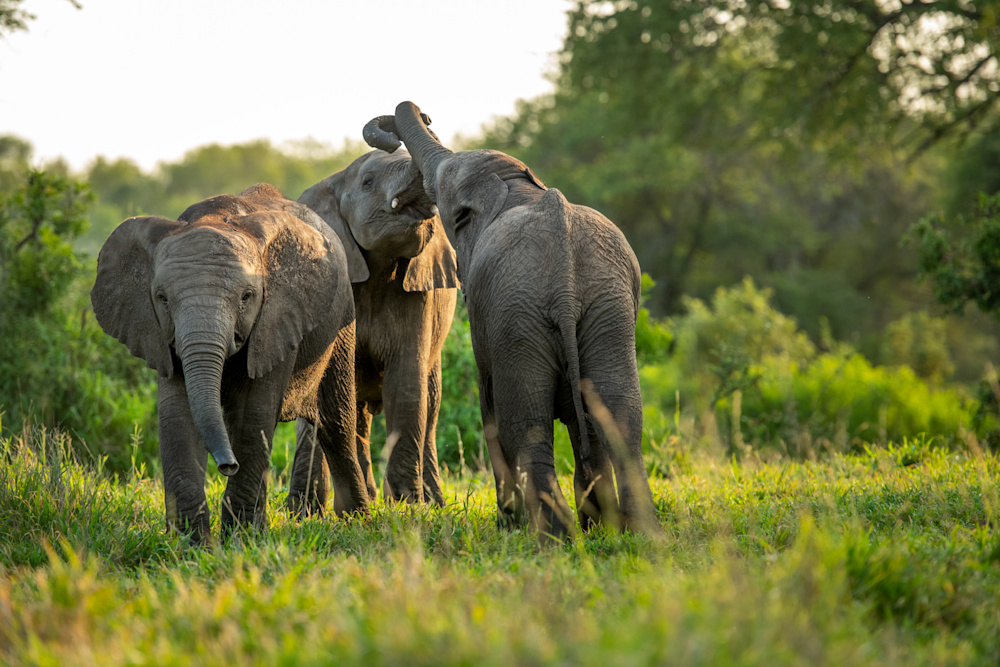
Buffalos
There have been a handful of sightings of buffalos this month, as they headed northward and westward out of the concession where the larger portion of the Mananga Pride trailed them. Even the few buffalo bulls we track down have become scarce and scattered, the few times we have seen buffalo on the concession lions have subsequently caught one sending the rest running for the hills.
This month however, we were fortunate to witness a magnificent encounter with a breeding herd of buffalo within the concession. A staggering number of approximately 1 000 buffalos migrated into the area, originating from our north western boundary, and embarked on a journey towards the Gudzani Dam. As they progressed, they faced the relentless pursuit and hunting efforts of lions, causing them to disperse into smaller factions comprising around 400 buffalos each, scattered throughout the concession. However, after a few days, they managed to reunite and reform the original herd.
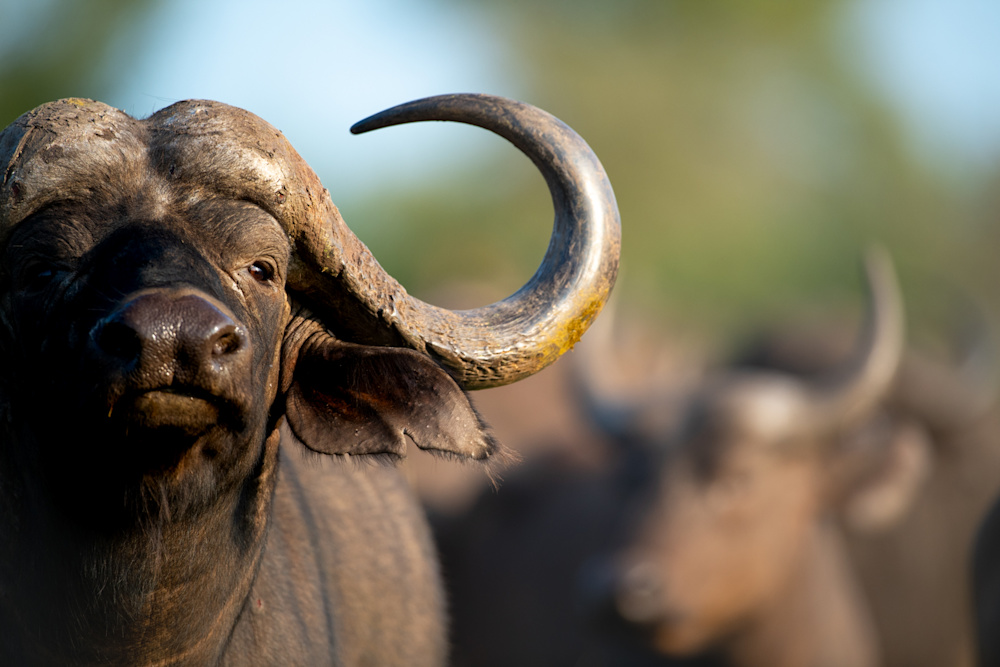
Plains game
The central depression unveiled its natural splendours, gracing our presence with a tapestry of breath-taking sightings. The plains game, in all its majesty, paraded before our eyes. A grand assembly of zebras, wildebeest, and giraffes harmoniously grazed, their collective presence painting the landscape with vibrant life. The game gracefully extended its reach, spanning from Pony Pan, traversing the expanse to Kori Clearing, and southward towards the sanctity of Two Thekwane. A surge in the warthog populace delighted our senses, witnessing these remarkable creatures joining forces with impalas and fellow plains game. The captivating grasslands that adorn the heart of the concession within the Depression became a stage for their communion, a harmonious celebration of survival amidst boundless beauty. Amidst this symphony of life, the waterbuck and kudu claimed their rightful domain along the timeless N'wanetsi River. From the very doorstep of our lodge to the vast expanses of the basalt grassland, their noble presence carved a path of grace and distinction, encapsulating the essence of the untamed wilderness. In this realm of abundance and untold wonders, the flora and fauna entwined in a delicate ballet, whispering tales of harmony and resilience. The central depression, a sanctuary of nature's grandeur, had gifted us an irreplaceable glimpse into the untamed realm that echoes with the echoes of Wilbur Smith's tales.
Rare animals and other sightings
In the golden hues of a winter afternoon twilight, a captivating scene unfolded as a serval cat and her two adorable kittens revelled in a moment of playful bliss. The mother, her coat adorned with distinctive spots, presided over the lively spectacle with a watchful eye. The nimble kittens bounded around their mother, their tiny paws pouncing on invisible prey and their tails flicking with excitement. Their energy seemed boundless as they engaged in synchronized leaps and intricate games of chase, their youthful spirits filling the air with contagious joy. While her little ones frolicked, the mother serval remained vigilant, her ears keenly attuned to every sound that echoed through the grasslands. Her piercing eyes, glinting with wisdom and instinct, scanned the surroundings, ever watchful for both potential prey and lurking predators. With a flick of her tail, the mother occasionally interrupted the playtime, guiding her kittens to take cover amidst the tall grasses. She imparted valuable lessons of survival, teaching them to blend into their surroundings and remain wary of the world beyond their play area. As the evening deepened, the mother serval's weary eye remained alert, knowing that the cover of darkness would soon bring forth a new symphony of hunters and hunted. Yet, for now, she embraced the fleeting moments of innocence and exploration, allowing her kittens to revel in their boundless curiosity. Together, the serval family embodied the delicate balance between nurturing and vigilance, showcasing the timeless dance of life on the African plains. With each play-filled leap and every cautious glance, they etched their story into the vast canvas of the wild, a testament to the enduring spirit of the feline world.
Under the cloak of darkness, a mesmerizing sight unfolded—a caracal, an elusive and agile hunter, emerged from the shadows. With cautious grace, it tentatively revealed itself, its silhouette blending seamlessly with the swaying long grass. Every sinew of its body seemed attuned to the night, as it stalked silently through the wilderness, its keen senses guiding its path. In the moonlit glow, the caracal's eyes gleamed with a mesmerizing intensity, hinting at the untamed spirit within. A fleeting encounter, a brief glimpse into the hidden world of this elusive predator, forever etched in the memories of those lucky enough to witness this nocturnal dance.
Birds
Almost all of the migratory birds have headed towards warmer climates following the warm rays of the sun and the insects and food that comes with it, however, the Singita concession still managed to produce a whopping 162 bird species.
The winter months brought forth enchanting sightings on the concession as a congregation of southern ground hornbills graced the landscape. These charismatic birds, with their striking black plumage and fiery red facial features, moved in unison through the grassy plains. Their distinct calls echoed through the air, resonating with a sense of ancient wisdom. As they foraged for insects and small reptiles, their noble presence captivated all who beheld them. These magnificent avian beings became symbols of the untamed wilderness, their presence a testament to the preservation of precious ecosystems.
We have had phenomenal sightings of martial eagles. These regal raptors, with wings outstretched and piercing gazes, ruled the realm of the heavens.
The graceful saddle-billed storks graced the waterways of the Nwanetsi River with their majestic presence. Their striking plumage adorned in hues of black, white, and vibrant yellow, command attention.
The bateleurs, who are believed by locals to have been the first animal to announce that creation has begun, have been seen on numerous occasions soaring in the heavens above, almost as if they were taking in the beauty the concession holds.
A crowned hornbill was seen perched in a fever tree along the cliff off the gorge where above it a peregrine falcon was in the skies mobbing an African hawk eagle.
We have been lucky to view common moorhens on a few occasions in the reeds that fill Mbeki’s Crossing.

By Jenny Hishin
Author / Field Guide